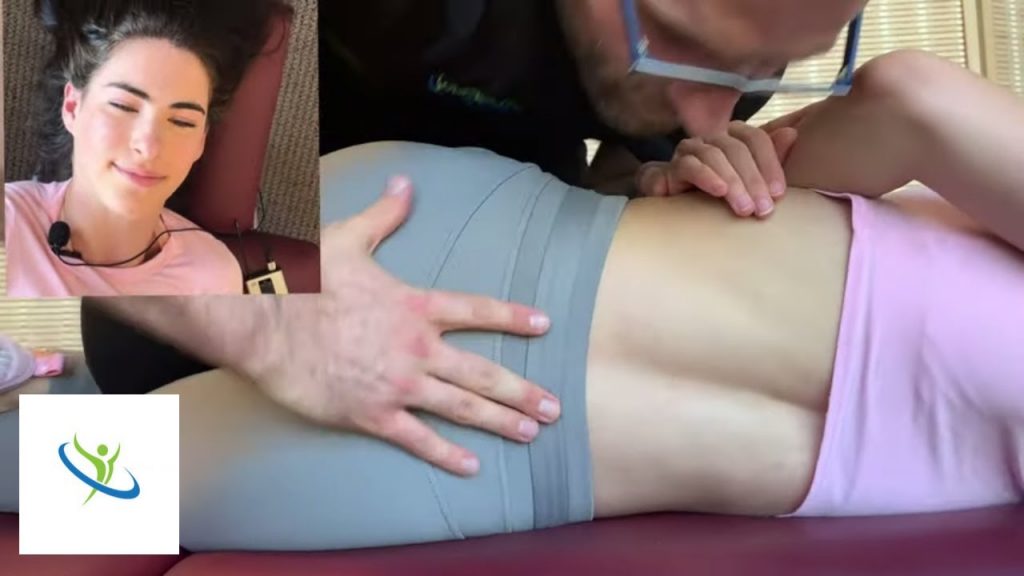
The modern office environment, a haven of productivity for some, can be a battleground for the back. Sitting for extended periods strains muscles, compresses discs, and disrupts the natural curve of the spine. This can lead to a persistent, nagging pain in the lower back, significantly impacting your comfort and well-being.
Fear not, desk warriors! There are ways to reclaim your ergonomic throne and vanquish lower back pain. This guide will equip you with a multi-pronged approach, combining posture adjustments, workstation tweaks, strategic movement, and pain-relieving techniques to transform your workspace into a haven for your back.
Posture Perfect: The Art of Sitting Tall
The foundation of back health at your desk lies in proper posture. Here’s how to achieve a posture that promotes spinal alignment and reduces strain:
- Neutral Spine: Imagine a gentle S-curve along your spine. This is your neutral spine, and it should be your guiding principle. Avoid slouching or arching your back excessively.
- Pelvic Positioning: Sit all the way back in your chair, engaging your core muscles to maintain a slight arch in your lower back. This prevents slouching and promotes proper lumbar support.
- Knee and Hip Harmony: Keep your knees bent at a 90-degree angle, with your thighs parallel to the floor. Your hips should be slightly higher than your knees, avoiding excessive hip flexion that can strain your lower back.
- Foot Focus: Plant your feet flat on the floor, hip-width apart. If your chair is too high, use a footrest to ensure your feet are fully supported.
- Shoulder Sanctuary: Relax your shoulders and keep them down away from your ears. Avoid hunching your shoulders forward, which can tighten your neck and upper back muscles.
- Monitor Magic: Position your monitor directly in front of you, at arm’s length and slightly below eye level. This prevents neck strain and encourages you to maintain a good posture.
Workstation Revamp: Ergonomics for the Win
Your workstation setup plays a crucial role in supporting your back. Here’s how to optimize your workspace:
- Chair Champion: Invest in a good ergonomic chair that offers adjustable features like lumbar support, armrests, and seat height. The backrest should curve slightly inwards to cradle your lower back.
- Desk Dance: If possible, consider a standing desk that allows you to alternate between sitting and standing throughout the day. This reduces static strain on your back muscles.
- Keyboard Kingdom: Keep your keyboard close to you, with your elbows bent at a 90-degree angle and your wrists straight. Consider a wrist rest for added comfort.
- Mouse Maestro: Position your mouse within easy reach to avoid excessive reaching and twisting.
Movement Matters: Break the Sitting Cycle
Sitting for prolonged periods is a recipe for back pain. Here’s how to incorporate movement into your workday:
- The Pomodoro Power: Use the Pomodoro Technique to break up your sitting time. Work in focused 25-minute intervals, followed by short 5-minute breaks to stand up, stretch, or walk around.
- The Stretch Salute: Schedule regular micro-stretches throughout the day. Focus on stretches that target your lower back, glutes, hamstrings, and shoulders.
- Walk It Out: Take short walking breaks throughout the day. Get some fresh air, stretch your legs, and improve circulation.
Pain Relief Arsenal: Taming the Ache
If back pain strikes, here are some strategies to find relief:
- Heat and Ice: Apply heat to tight muscles and ice to reduce inflammation. Alternate between the two for short periods throughout the day.
- Pain Relievers: Over-the-counter pain relievers like ibuprofen or acetaminophen can help manage pain. However, consult your doctor before using them regularly.
- Lumbar Support: Use a lumbar support pillow or rolled-up towel to provide additional support for your lower back while sitting.
Beyond the Basics: Proactive Strategies
- Strengthen Your Core: A strong core helps stabilize your spine and reduces back pain. Regularly perform core-strengthening exercises like planks, bridges, and bird-dogs.
- Maintain a Healthy Weight: Excess weight puts additional strain on your lower back. Maintaining a healthy weight can significantly reduce back pain.
- Listen to Your Body: Pay attention to your body’s signals. If you start to feel pain, adjust your posture, take a break, or stretch. Don’t ignore persistent pain; consult a healthcare professional for proper diagnosis and treatment.
Remember, preventing back pain is always better than treating it. By incorporating these tips into your daily routine, you can transform your workspace into a haven for your back and conquer the curse of
